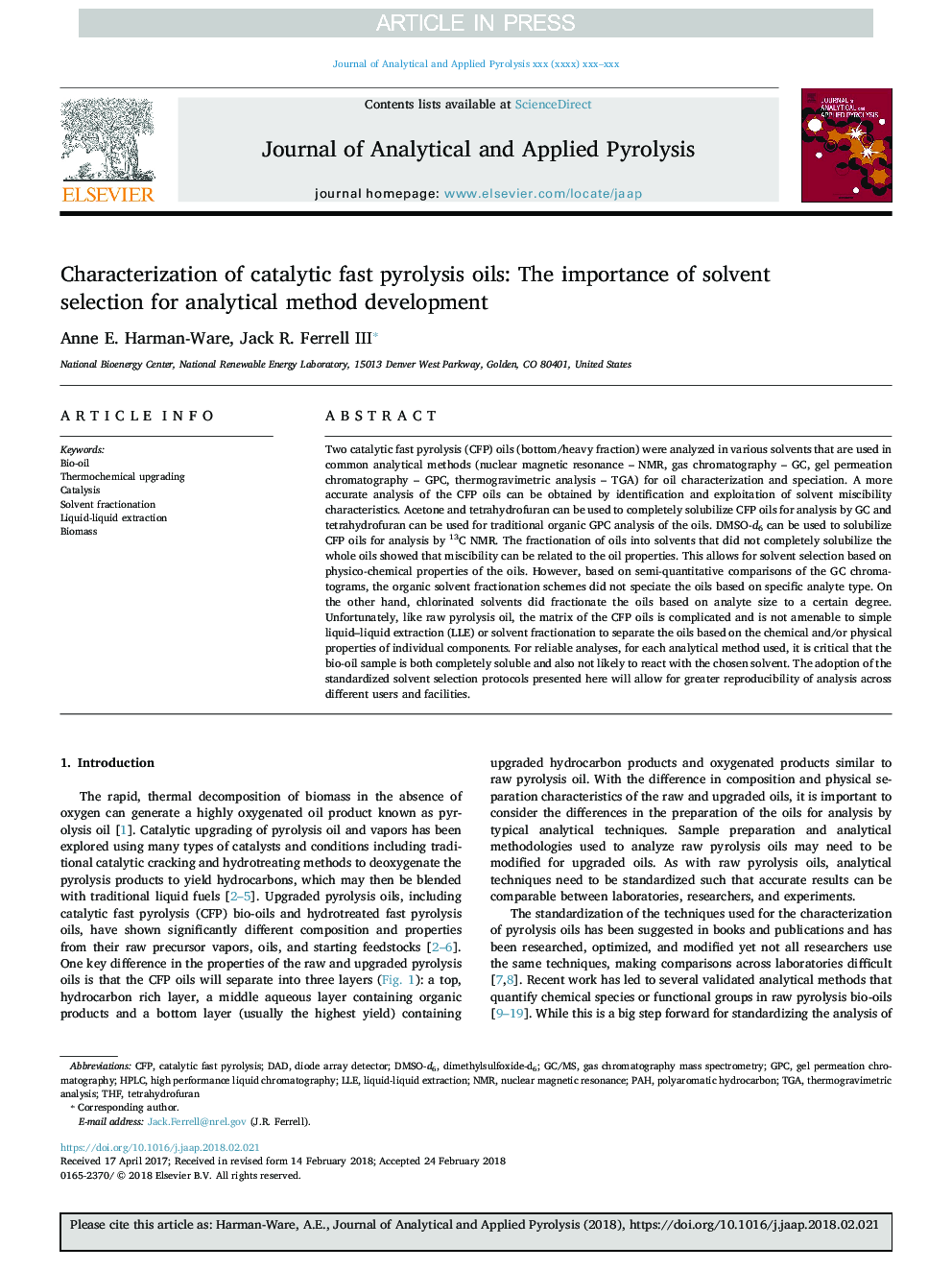| Article ID | Journal | Published Year | Pages | File Type |
|---|---|---|---|---|
| 7606324 | Journal of Analytical and Applied Pyrolysis | 2018 | 10 Pages |
Abstract
Two catalytic fast pyrolysis (CFP) oils (bottom/heavy fraction) were analyzed in various solvents that are used in common analytical methods (nuclear magnetic resonance - NMR, gas chromatography - GC, gel permeation chromatography - GPC, thermogravimetric analysis - TGA) for oil characterization and speciation. A more accurate analysis of the CFP oils can be obtained by identification and exploitation of solvent miscibility characteristics. Acetone and tetrahydrofuran can be used to completely solubilize CFP oils for analysis by GC and tetrahydrofuran can be used for traditional organic GPC analysis of the oils. DMSO-d6 can be used to solubilize CFP oils for analysis by 13C NMR. The fractionation of oils into solvents that did not completely solubilize the whole oils showed that miscibility can be related to the oil properties. This allows for solvent selection based on physico-chemical properties of the oils. However, based on semi-quantitative comparisons of the GC chromatograms, the organic solvent fractionation schemes did not speciate the oils based on specific analyte type. On the other hand, chlorinated solvents did fractionate the oils based on analyte size to a certain degree. Unfortunately, like raw pyrolysis oil, the matrix of the CFP oils is complicated and is not amenable to simple liquid-liquid extraction (LLE) or solvent fractionation to separate the oils based on the chemical and/or physical properties of individual components. For reliable analyses, for each analytical method used, it is critical that the bio-oil sample is both completely soluble and also not likely to react with the chosen solvent. The adoption of the standardized solvent selection protocols presented here will allow for greater reproducibility of analysis across different users and facilities.
Related Topics
Physical Sciences and Engineering
Chemistry
Analytical Chemistry
Authors
Anne E. Harman-Ware, Jack R. III,
